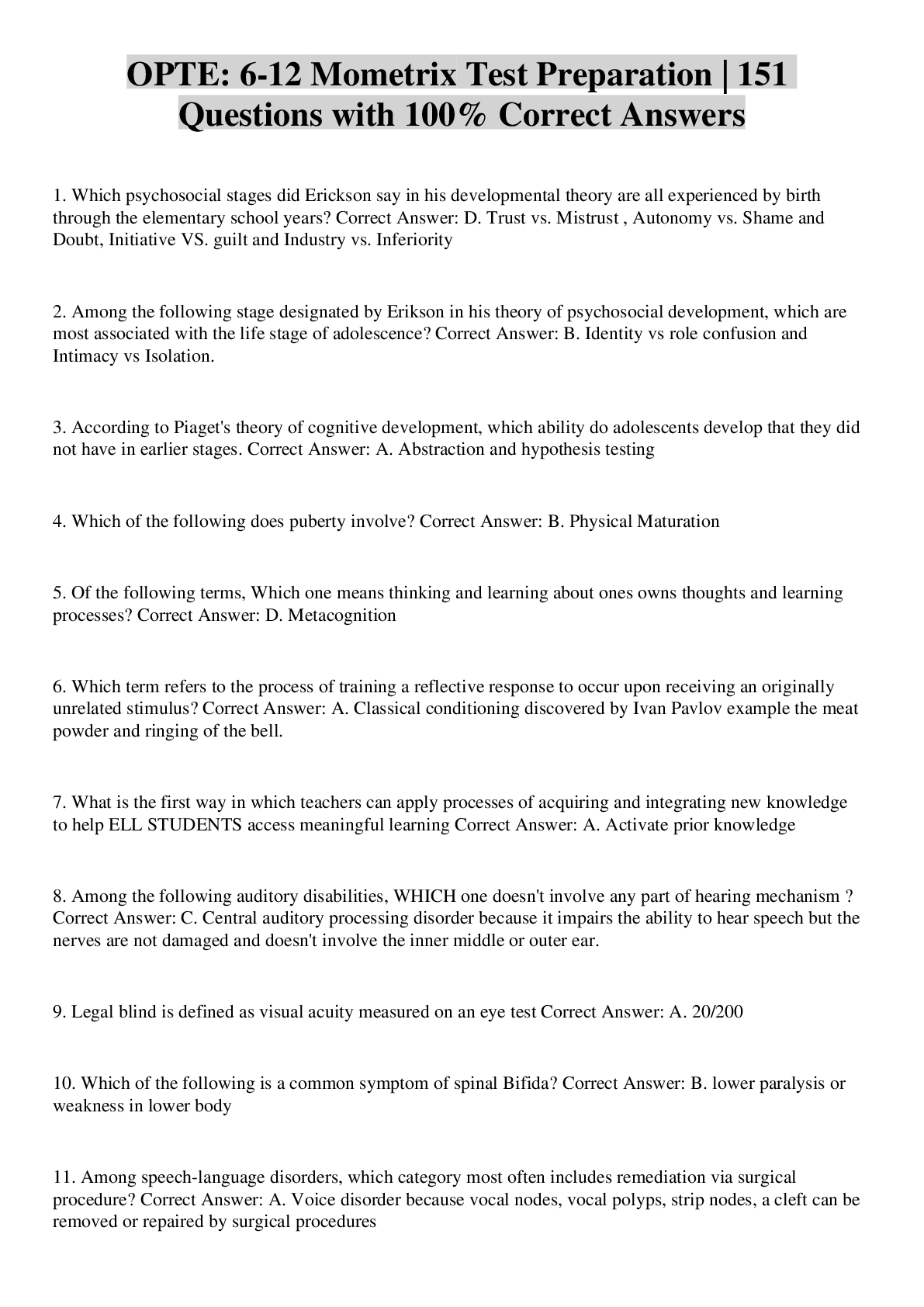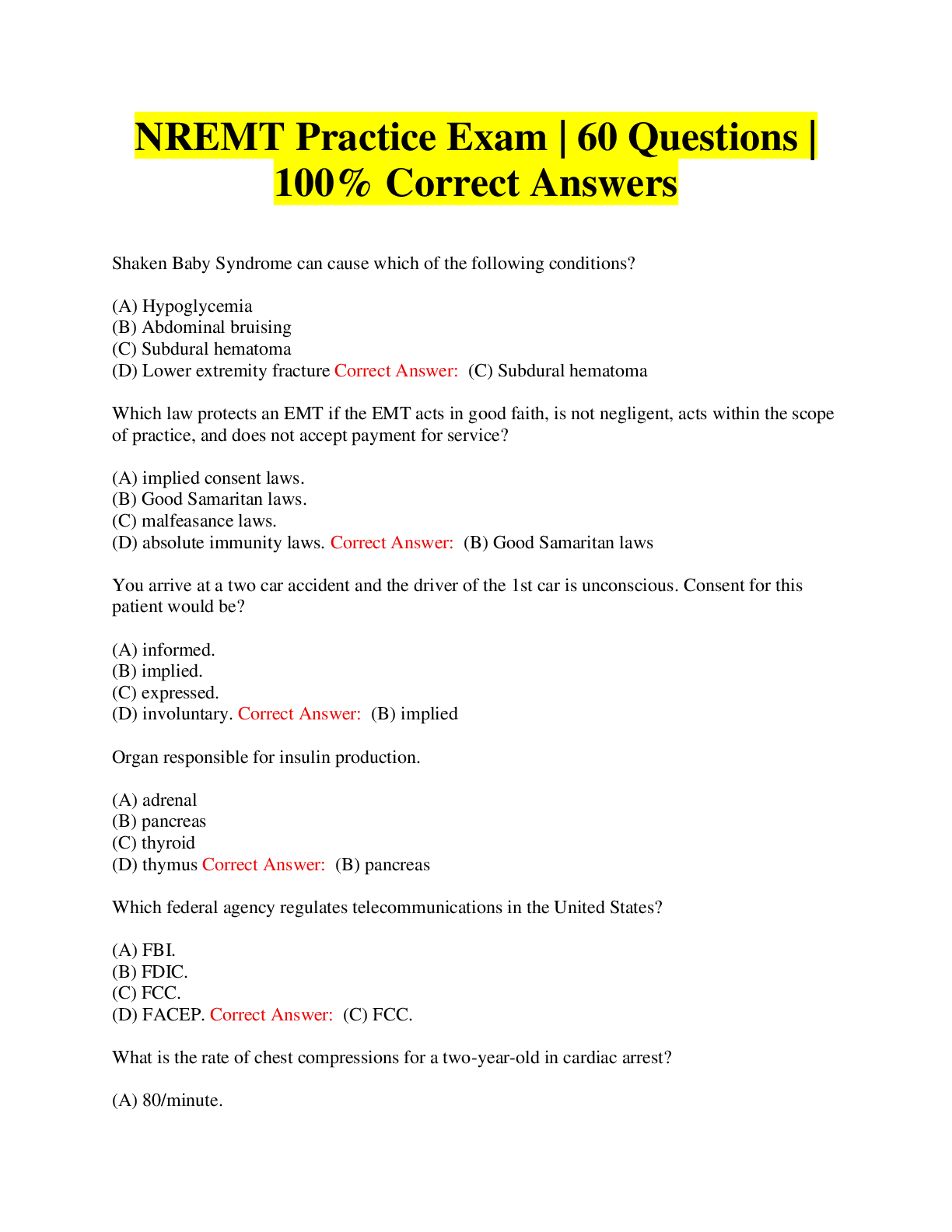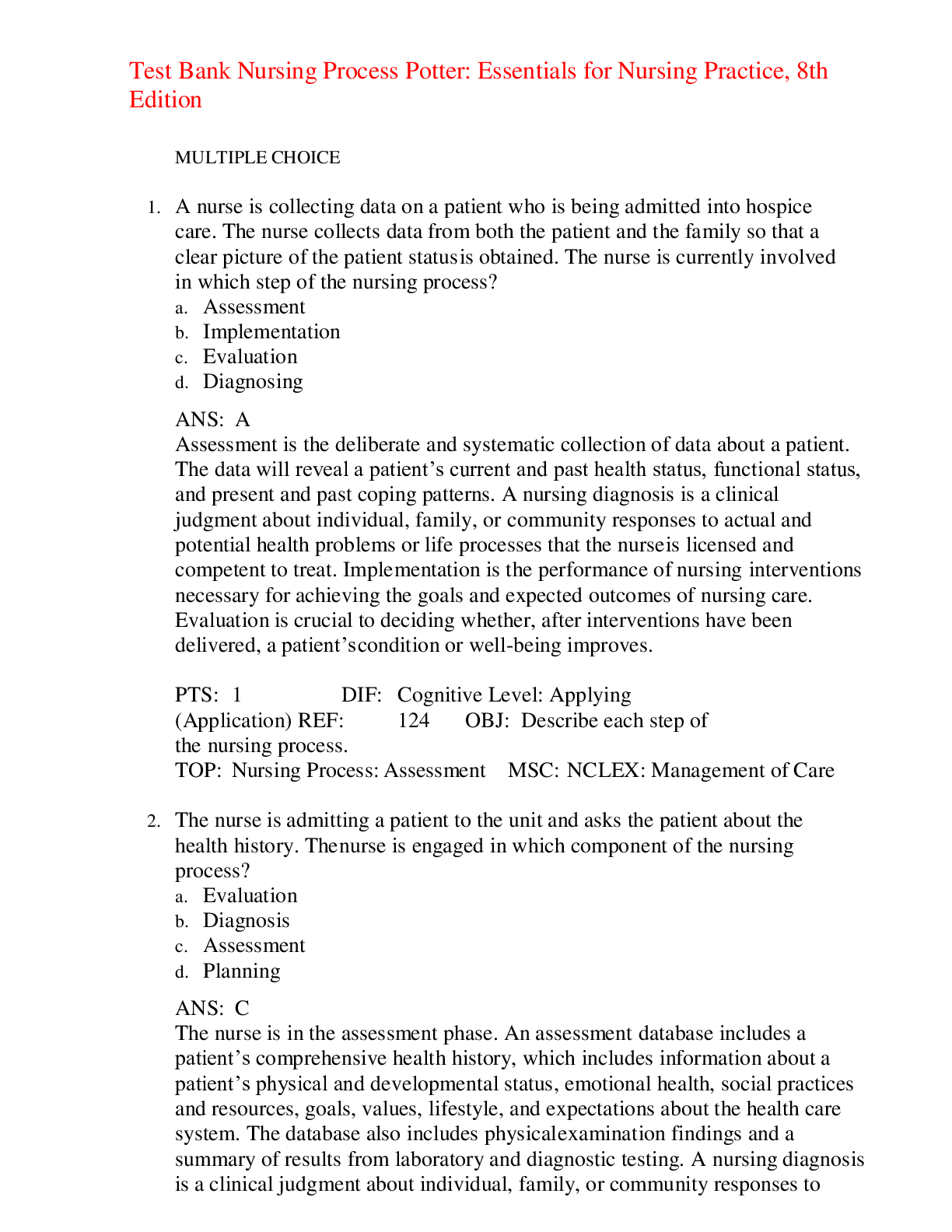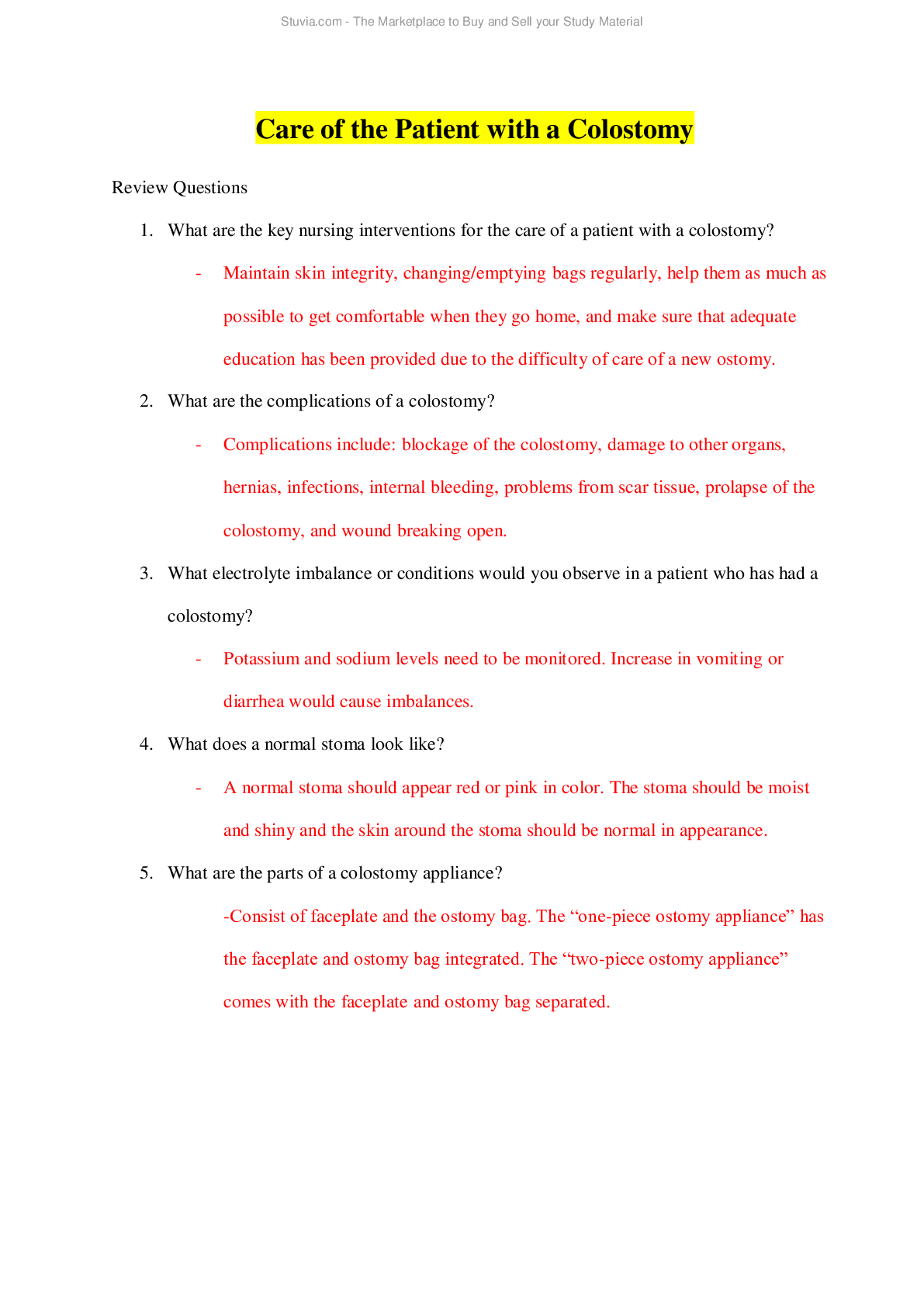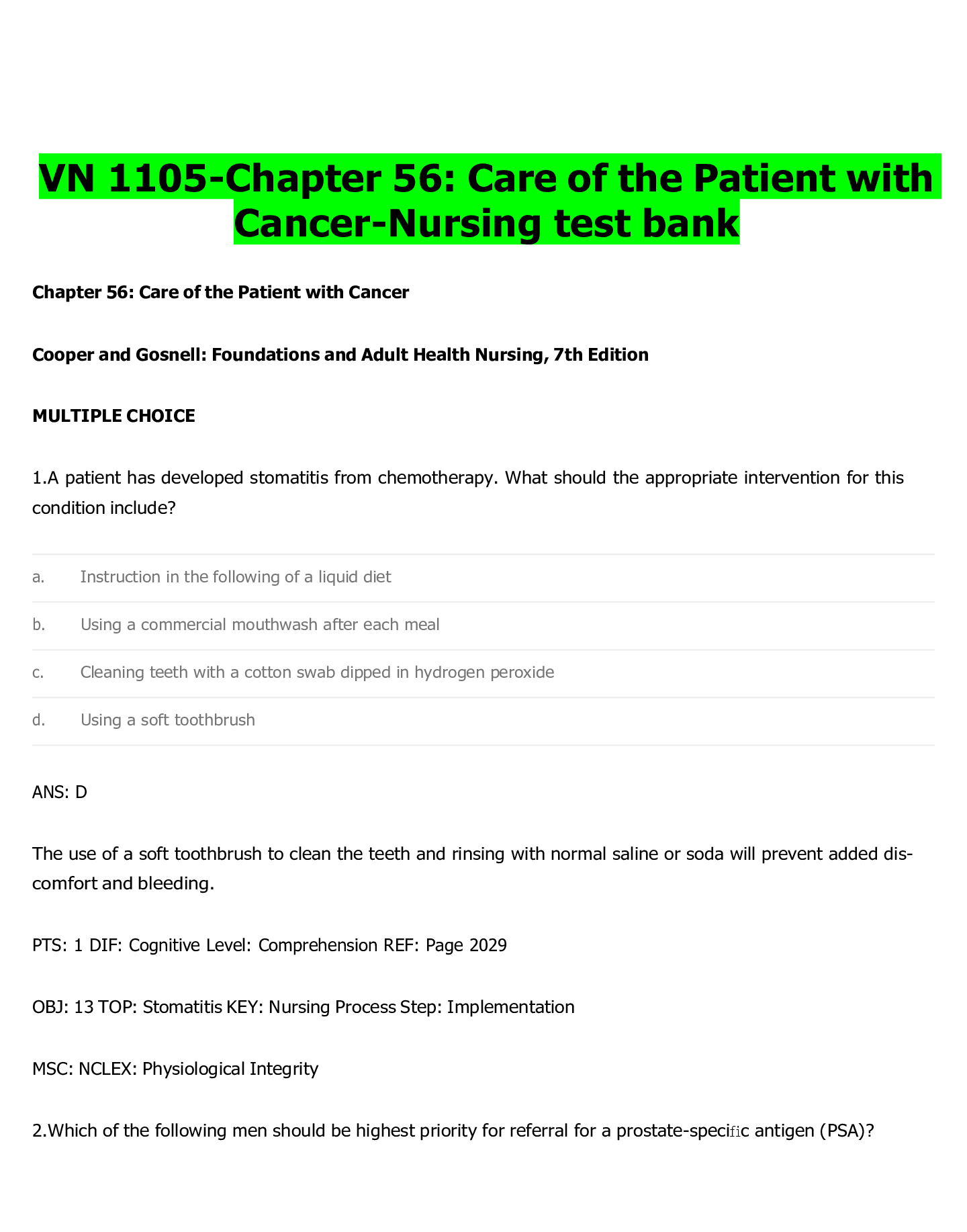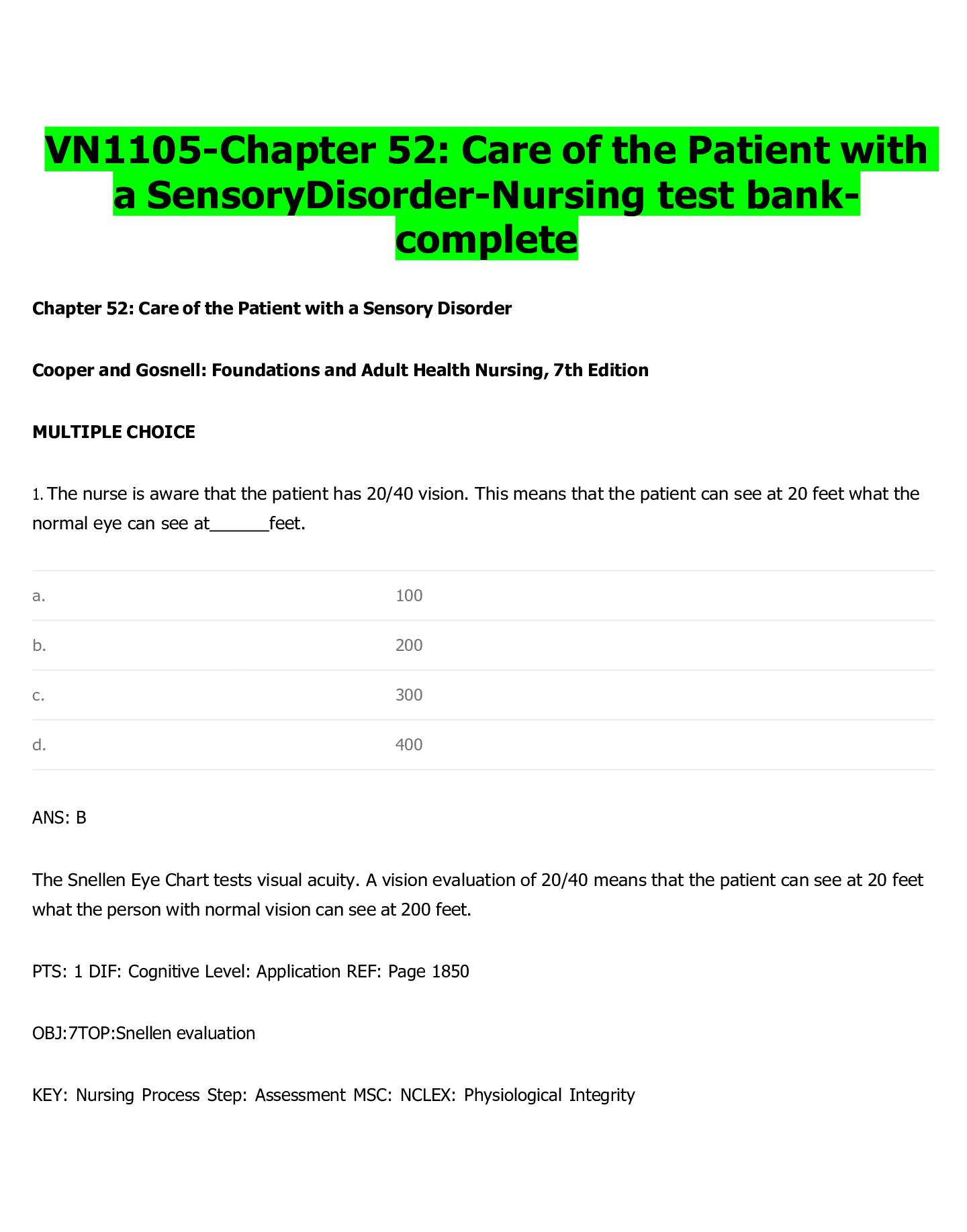Health Care > EXAM > NR 341 : ATI Care of the Patient with Respiratory Failure: Chapter 3: Perrin: Understanding the Esse (All)
NR 341 : ATI Care of the Patient with Respiratory Failure: Chapter 3: Perrin: Understanding the Essentials of Critical Care Nursing: Chamberlain College of Nursing
Document Content and Description Below
ATI Care of the Patient with Respiratory Failure: Chapter 3: Perrin: Understanding the Essentials of Critical Care Nursing: Chamberlain College of Nursing NR 341 (A Graded) Latest Questions a... nd Complete Solutions Perrin: Understanding the Essentials of Critical Care Nursing Chapter 3: Care of the Patient with Respiratory Failure MULTIPLE CHOICE. Choose the one alternative that best completes the statement or answers the questions 1) A potential cause for hypoxemic failure from Type I respiratory failure is linked to: A) Failure of the neurological system to stimulate respirations. B) Muscular failure to move the air into and out of the lungs. C) Skeletal alterations of the thoracic region that limit air movement. D) Breakdown of oxygen transport from the alveolus to arterial flow. Answer: D Explanation: A) Type I respiratory failure is caused by a transportation issue between the lungs and arterial blood flow. Type II is related to musculoskeletal changes that limit lung functioning or suppress muscle action by drugs, such as narcotics. #1, #2, #3 are examples of Type II respiratory failure causes. Nursing Process: Evaluation Cognitive Level: Knowledge Comprehension Category of Need: Physiological Integrity–Physiological Adaptations B) Type I respiratory failure is caused by a transportation issue between the lungs and arterial blood flow. Type II is related to musculoskeletal changes that limit lung functioning or suppress muscle action by drugs, such as narcotics. #1, #2, #3 are examples of Type II respiratory failure causes. Nursing Process: Evaluation Cognitive Level: Knowledge Comprehension Category of Need: Physiological Integrity–Physiological Adaptations C) Type I respiratory failure is caused by a transportation issue between the lungs and arterial blood flow. Type II is related to musculoskeletal changes that limit lung functioning or suppress muscle action by drugs, such as narcotics. #1, #2, #3 are examples of Type II respiratory failure causes. Nursing Process: Evaluation Cognitive Level: Knowledge Comprehension Category of Need: Physiological Integrity–Physiological Adaptations D) Type I respiratory failure is caused by a transportation issue between the lungs and arterial blood flow. Type II is related to musculoskeletal changes that limit lung functioning or suppress muscle action by drugs, such as narcotics. #1, #2, #3 are examples of Type II respiratory failure causes. Nursing Process: Evaluation Cognitive Level: Knowledge Comprehension Category of Need: Physiological Integrity–Physiological Adaptations 2) Which of the following criteria is correct concerning acute lung injury (ALI)? A) ALI's direct causes can include biochemical agents outside the pulmonary system. B) ALI is a single organ dysfunction syndrome that has a chronic onset. C) Symptoms of ALI include presence of little infiltrates on chest radiography. D) Right ventricular failure occurs immediately with PA>O1P8 mm Hg. Answer: A Explanation: A) This statement reflects indirect antecedents. Direct antecedents include direct injury or assault on pulmonary tissue. #2 is incorrect. ALI is a multiorgan dysfunction syndrome that has an acute onset. #3 is incorrect. Symptom of ALI includes the presence of bilateral infiltrates due to leakage of fluid from the pulmonary capillaries into the alveoli. #4 is incorrect. Left ventricular failure does not occur and PAOP<s1t8aymsm Hg. Nursing Process: Evaluation Cognitive Level: Knowledge Comprehension Category of Need: Physiological Integrity–Physiological Adaptation B) This statement reflects indirect antecedents. Direct antecedents include direct injury or assault on pulmonary tissue. #2 is incorrect. ALI is a multiorgan dysfunction syndrome that has an acute onset. #3 is incorrect. Symptom of ALI includes the presence of bilateral infiltrates due to leakage of fluid from the pulmonary capillaries into the alveoli. #4 is incorrect. Left ventricular failure does not occur and PAOP<s1t8aymsm Hg. Nursing Process: Evaluation Cognitive Level: Knowledge Comprehension Category of Need: Physiological Integrity–Physiological Adaptation C) This statement reflects indirect antecedents. Direct antecedents include direct injury or assault on pulmonary tissue. #2 is incorrect. ALI is a multiorgan dysfunction syndrome that has an acute onset. #3 is incorrect. Symptom of ALI includes the presence of bilateral infiltrates due to leakage of fluid from the pulmonary capillaries into the alveoli. #4 is incorrect. Left ventricular failure does not occur and PAOP<s1t8aymsm Hg. Nursing Process: Evaluation Cognitive Level: Knowledge Comprehension Category of Need: Physiological Integrity–Physiological Adaptation [Show More]
Last updated: 2 years ago
Preview 1 out of 25 pages
 (1).png)
Buy this document to get the full access instantly
Instant Download Access after purchase
Buy NowInstant download
We Accept:

Reviews( 0 )
$15.00
Can't find what you want? Try our AI powered Search
Document information
Connected school, study & course
About the document
Uploaded On
Sep 13, 2022
Number of pages
25
Written in
Additional information
This document has been written for:
Uploaded
Sep 13, 2022
Downloads
0
Views
57

